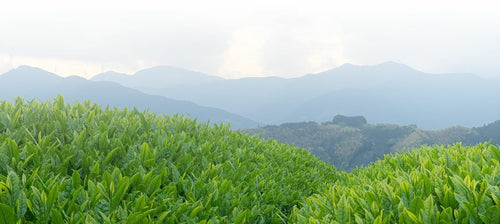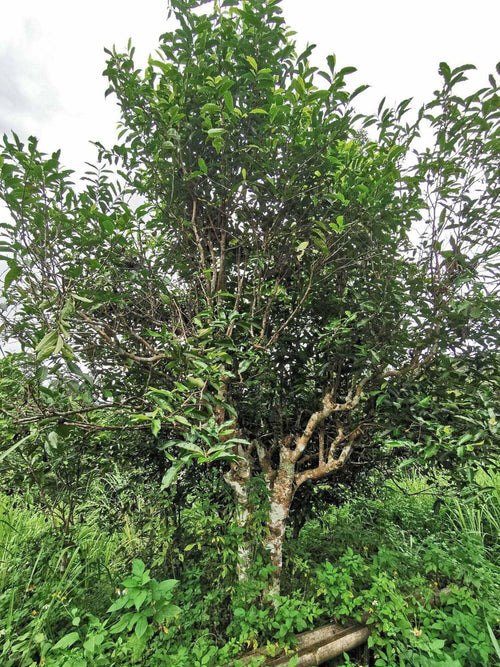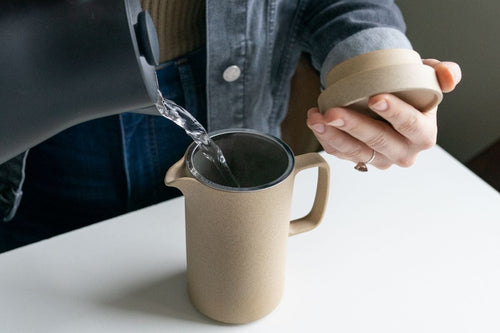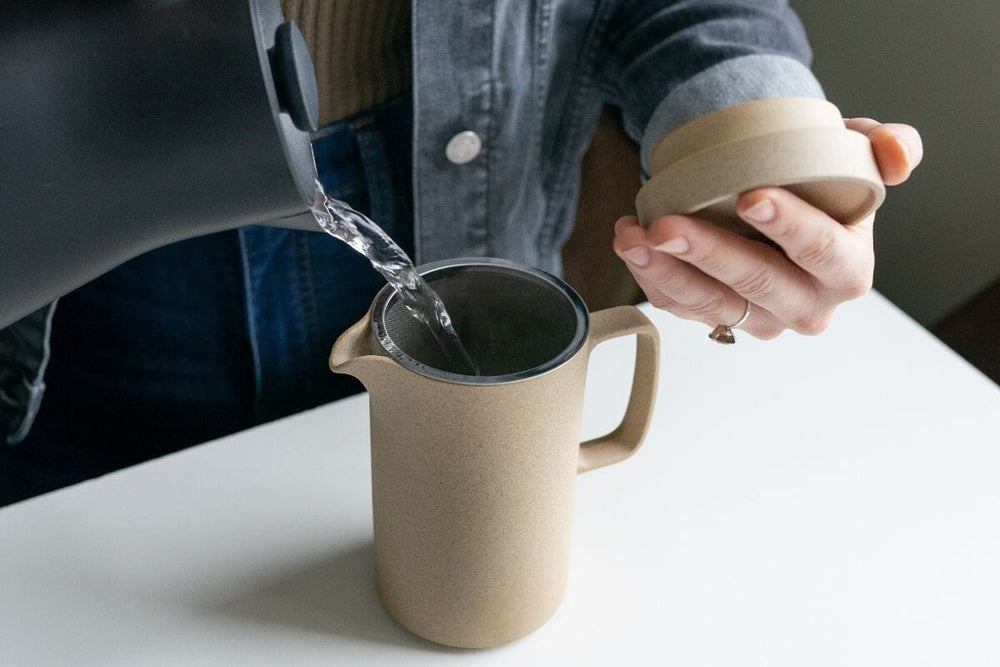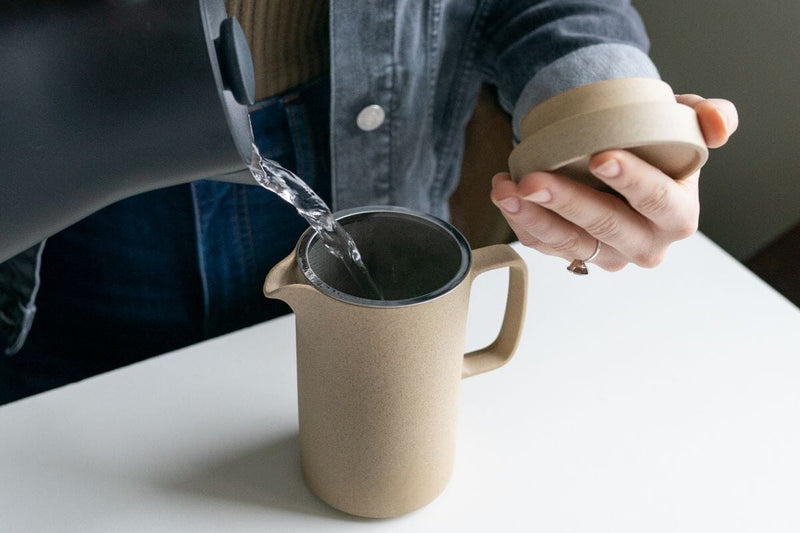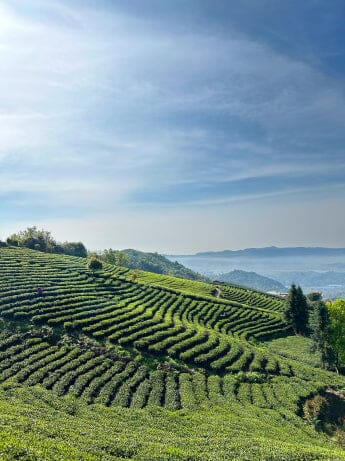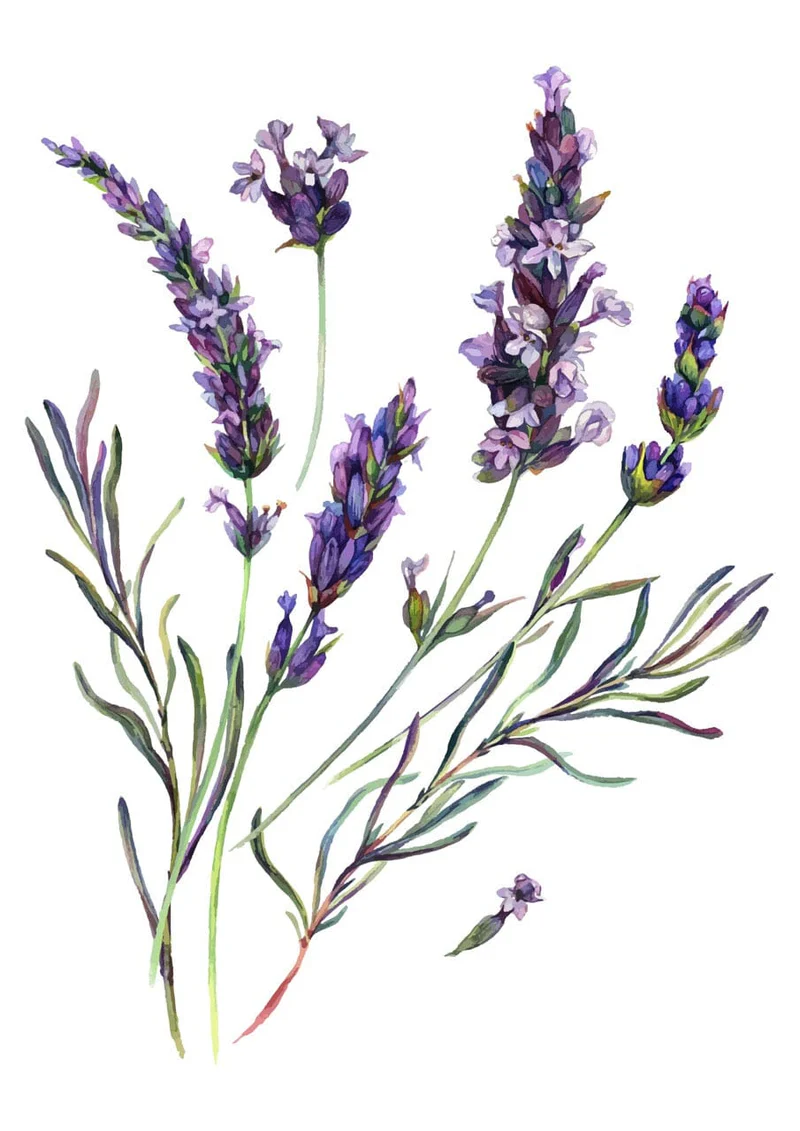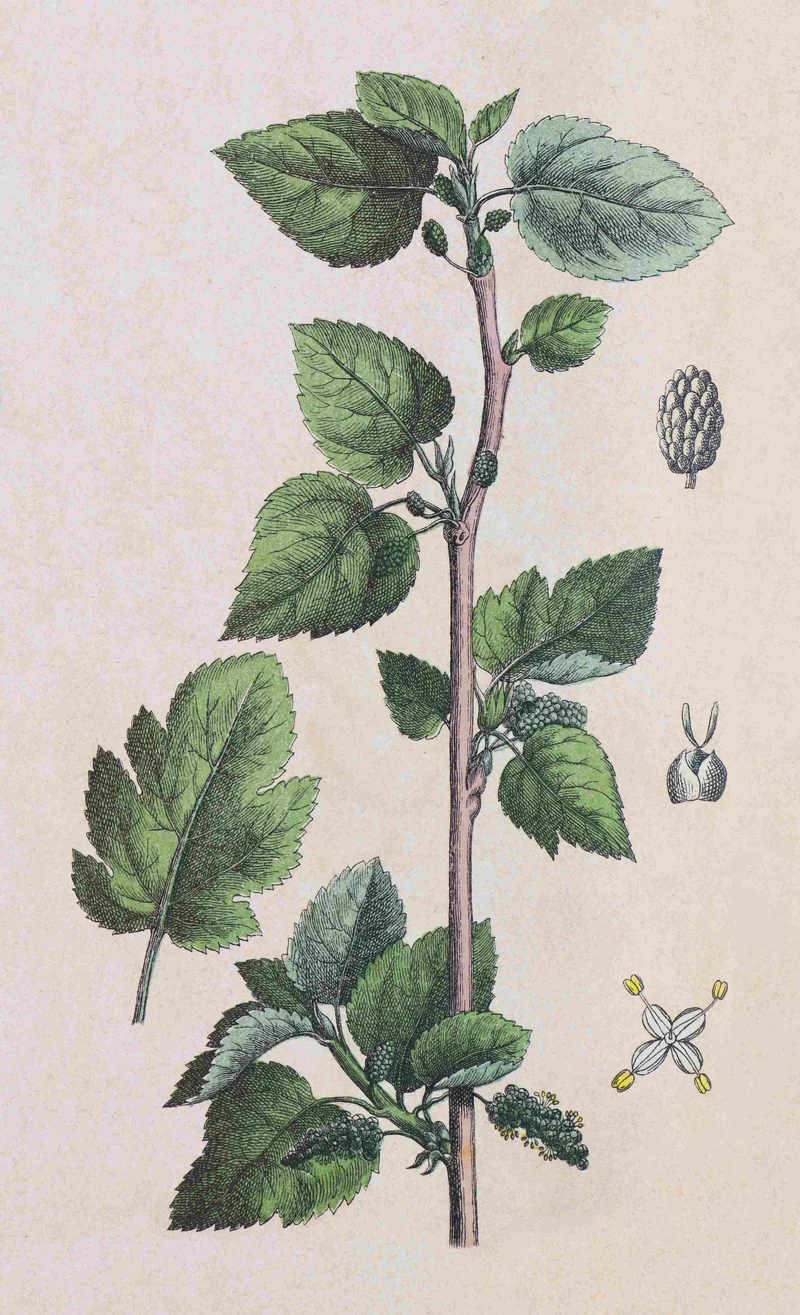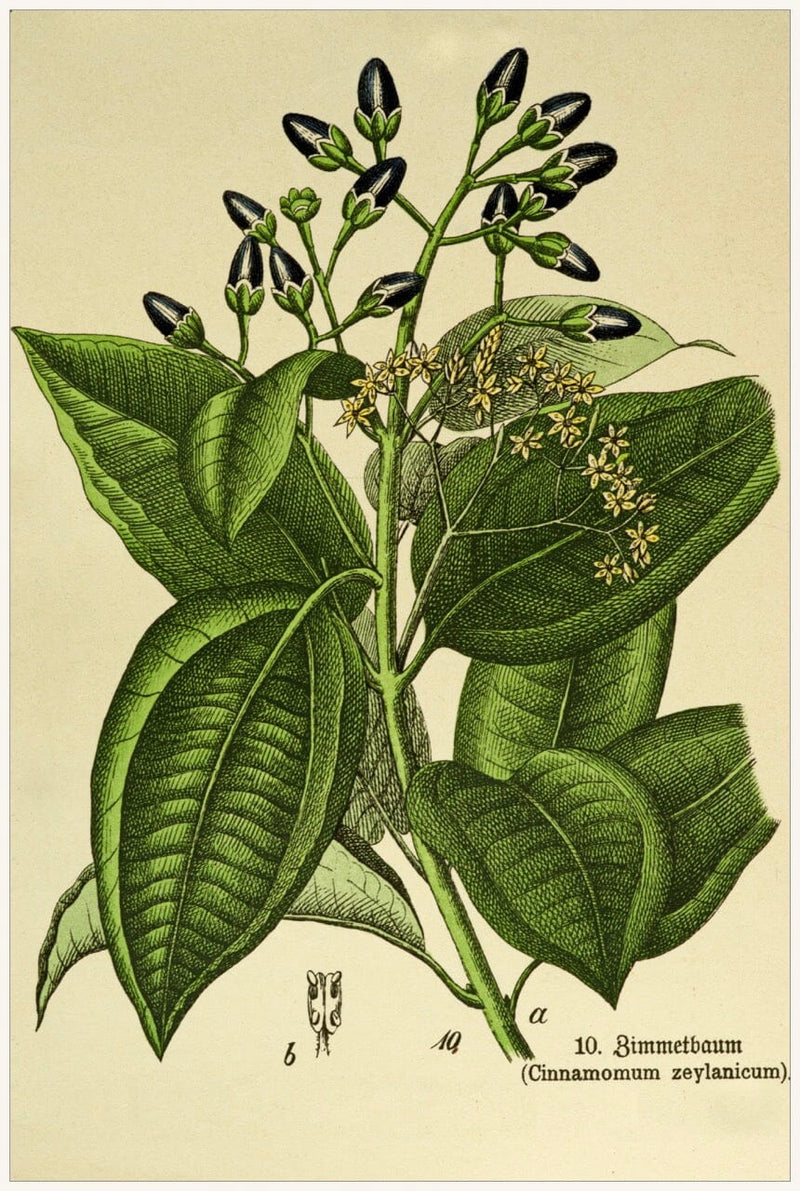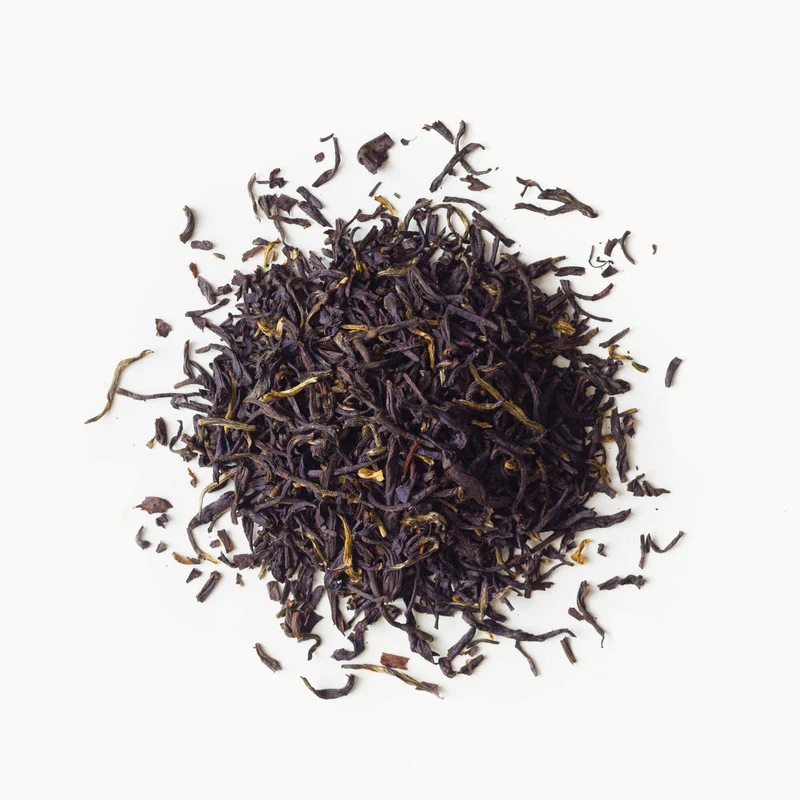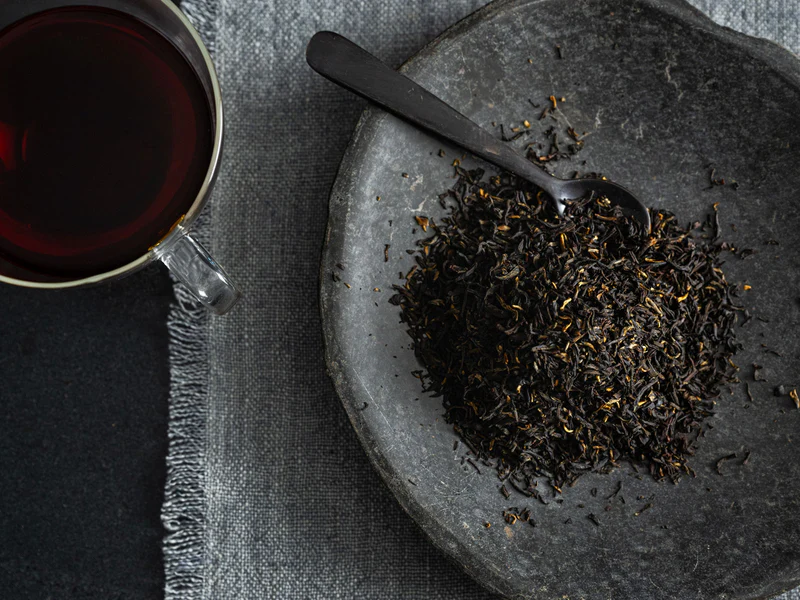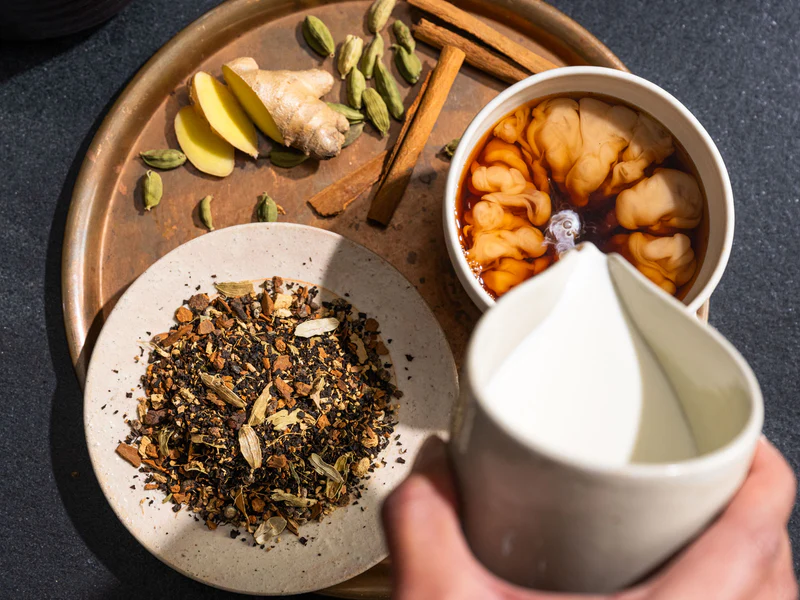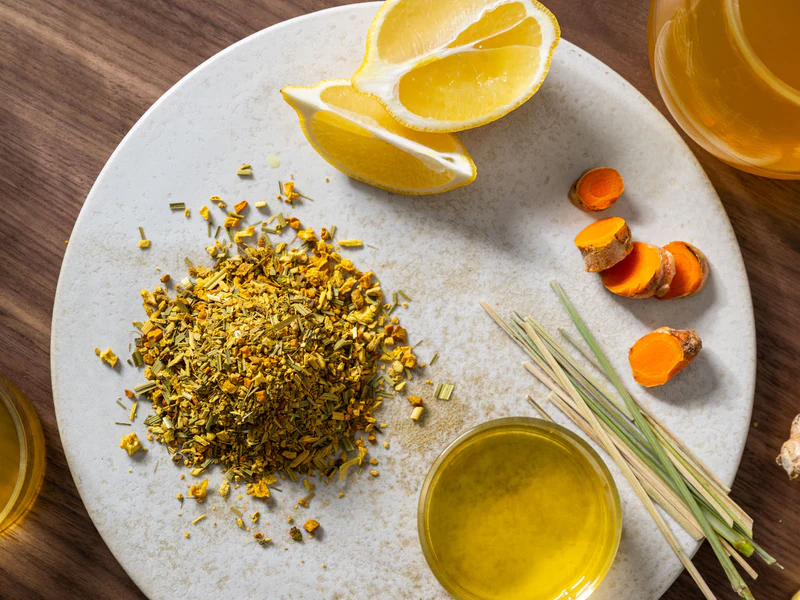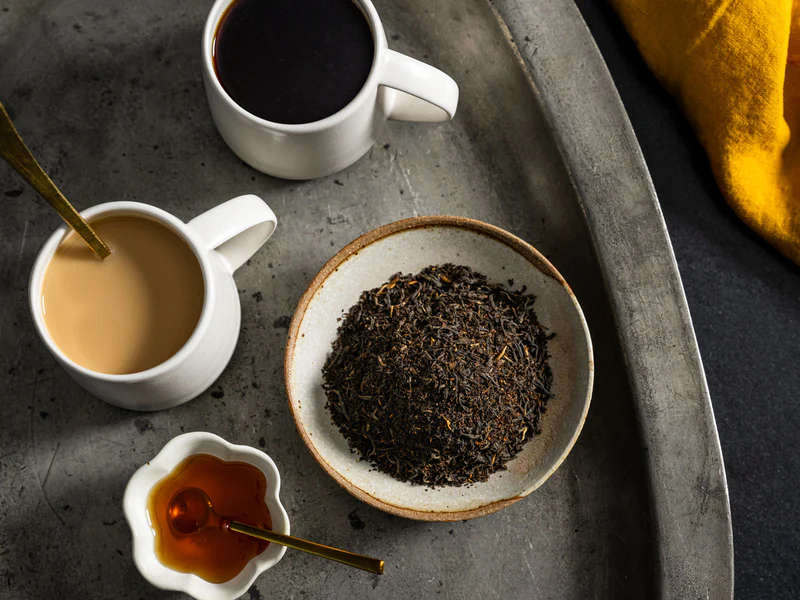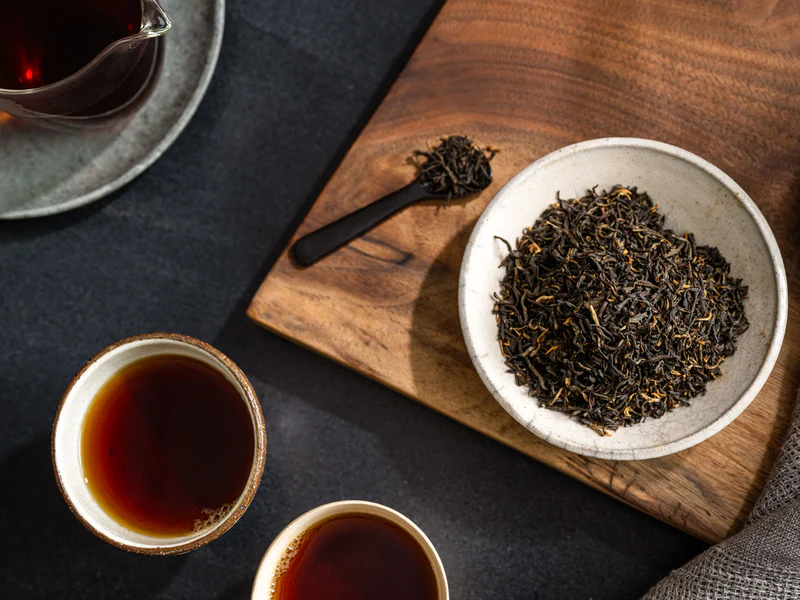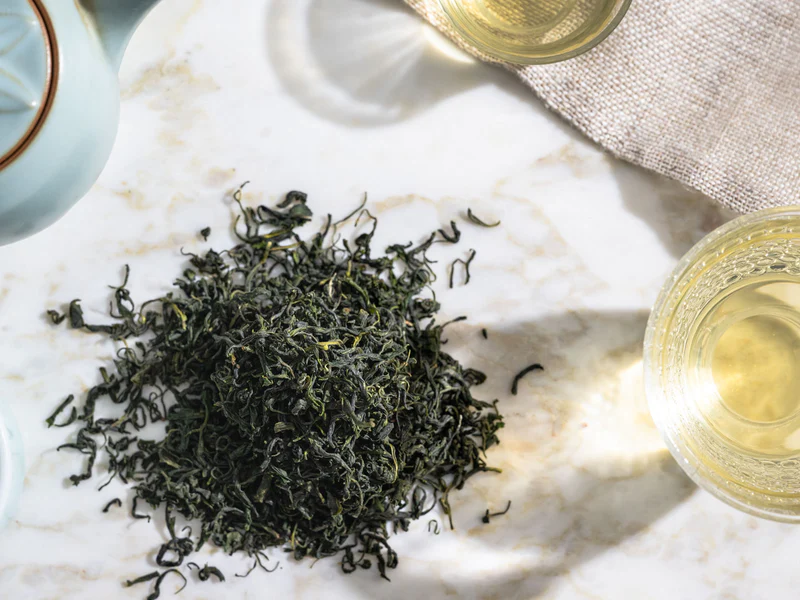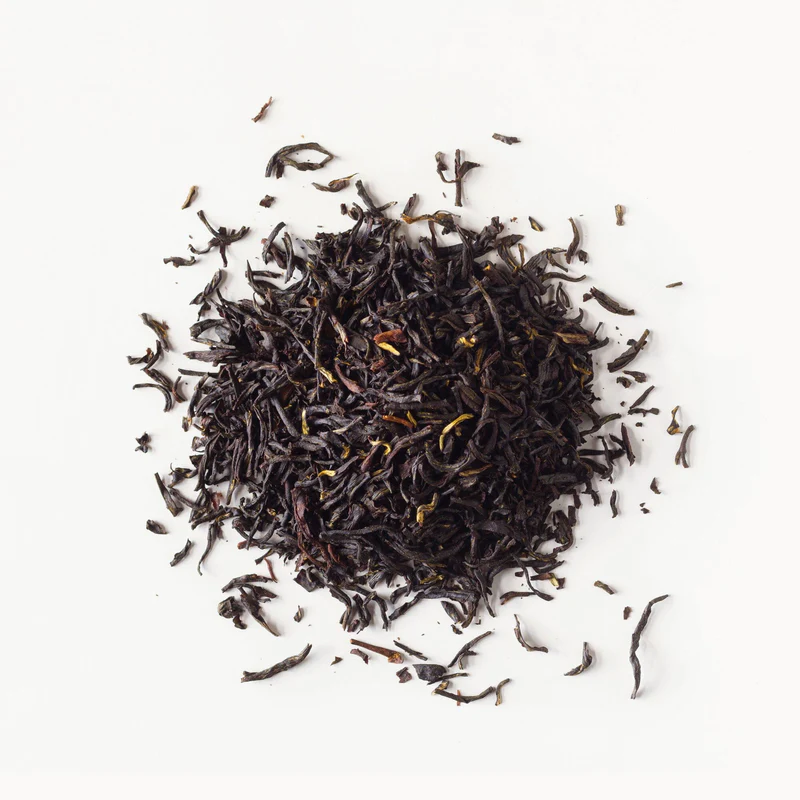If you are new to tea, you will be amazed at the difference that water temperature will make when brewing tea. When you use the correct water temperature it can open up a whole world of flavor that you never knew existed within tea.
Each type of tea has an ideal range of temperatures to be applied in brewing because the wrong water temperature can cause an over extraction or under extraction of polyphenols (tannins), which can alter the flavor of your tea.
Although many water temperatures fall lower than 212°F (the boiling point of water), ideally, you will boil the water and cool down to the desired degree. This concept links back to the Tang Dynasty (618-906 CE) and is referred to as kai shui 开水 or “open the water.”
To reach the desired temperature you can employ a variety of methods. Adding a bit of spring water to your boiled water or pouring the boiled water into cooling bowls is a great option when preparing tea. You can use a cha hai (sharing pitcher) or cooling bowl (yuzamashi) to distribute your cool water or dance the water between two vessels to cool down the water. Not only does this prepare the water to best suit brewing tea, if you are using treated municipal water, it can help in dissapating the chlorine taste and smell.
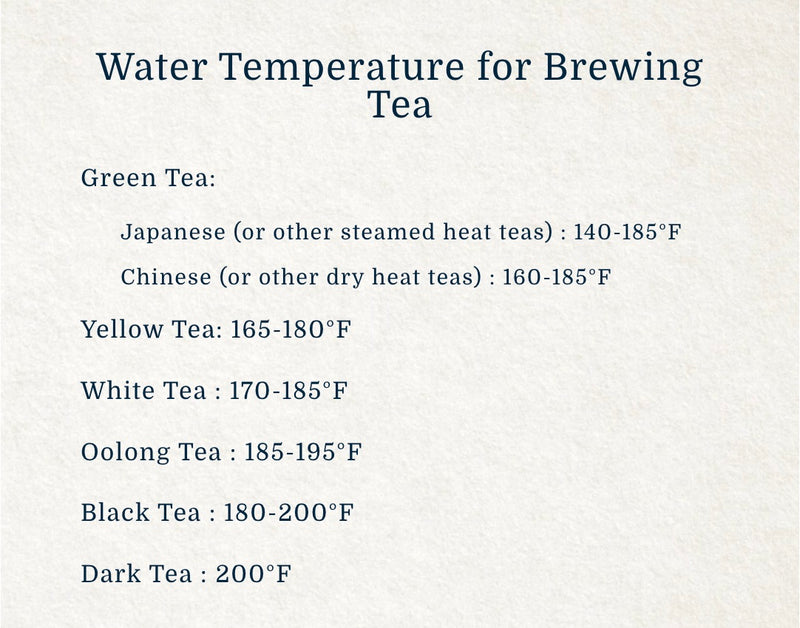
When you use water that is too hot we often call this “burning” the tea. “Burning the tea” means, the hot water has over extracted the polyphenols (tannins) and the tea becomes astringent. This altered flavor prevents the tea from delivering the delicious potential of the leaves! In particular this reference is used with white and green teas.
When you use water that is too cold, you will often under extract the polyphenols (tannins), and your tea will lack its full flavor and character it was meant to create.
It is important to note most botanical teas will not be “burned” as they don’t contain tannins or other elements that could compromise flavor when subjected to and extracted through hot water. Additionally, many botanicals require the hottest water possible in order to fully extract optimal flavor and color.
When brewing tea, the variable water temperature directly ties into the processing method of the tea. What does “processing method” mean? When crafting dried teas from fresh tea leaf, a myriad of steps can be applied to elicit different flavors, which directly determines the category the final product will be. The 6 categories of Camellia sinensis are Green, Yellow, White, Oolong, Black, and Dark teas. The steps taken to create the categories can include dry heat, steam heat, rolling, bruising, and many more. These techniques determine the amount of oxidation that occurs in the leaf.
Oxidation is a natural enzymatic reaction that is similar to the browning of a sliced apple or freshly chopped basil leaves. For tea, it is the biochemical process that changes freshly picked leaves from green to yellow, amber to red, and finally brown. Heat halts the oxidation process. Though oxidation is not desired in culinary applications, controlling the amount of oxidation is a significant goal in tea processing.
When manipulating the percentage of oxidation in tea leaves, the tea tannins are being altered. Tannins are also referred to as antioxidants or polyphenols, which are secondary plant metabolites. Typically, plants produce secondary metabolites to protect against UV radiation or pathogens. Recent epidemiologic study publications suggest consuming polyphenols could benefit one’s health in numerous ways.
Here we have an outline of the levels of polyphenol types and how we typically see these structures represented in the tea categories. The polyphenols depicted in the chart include: Fresh Tea Polyphenols, Theaflavins, Thearubigins, and Theabrownins. We see on the spectrum, the darker we go, the differently the polyphenols develop. Each class of polyphenols is touted to have different benefits, so hypothetically, one could select a tea with the greater potential for separate healthful gains.
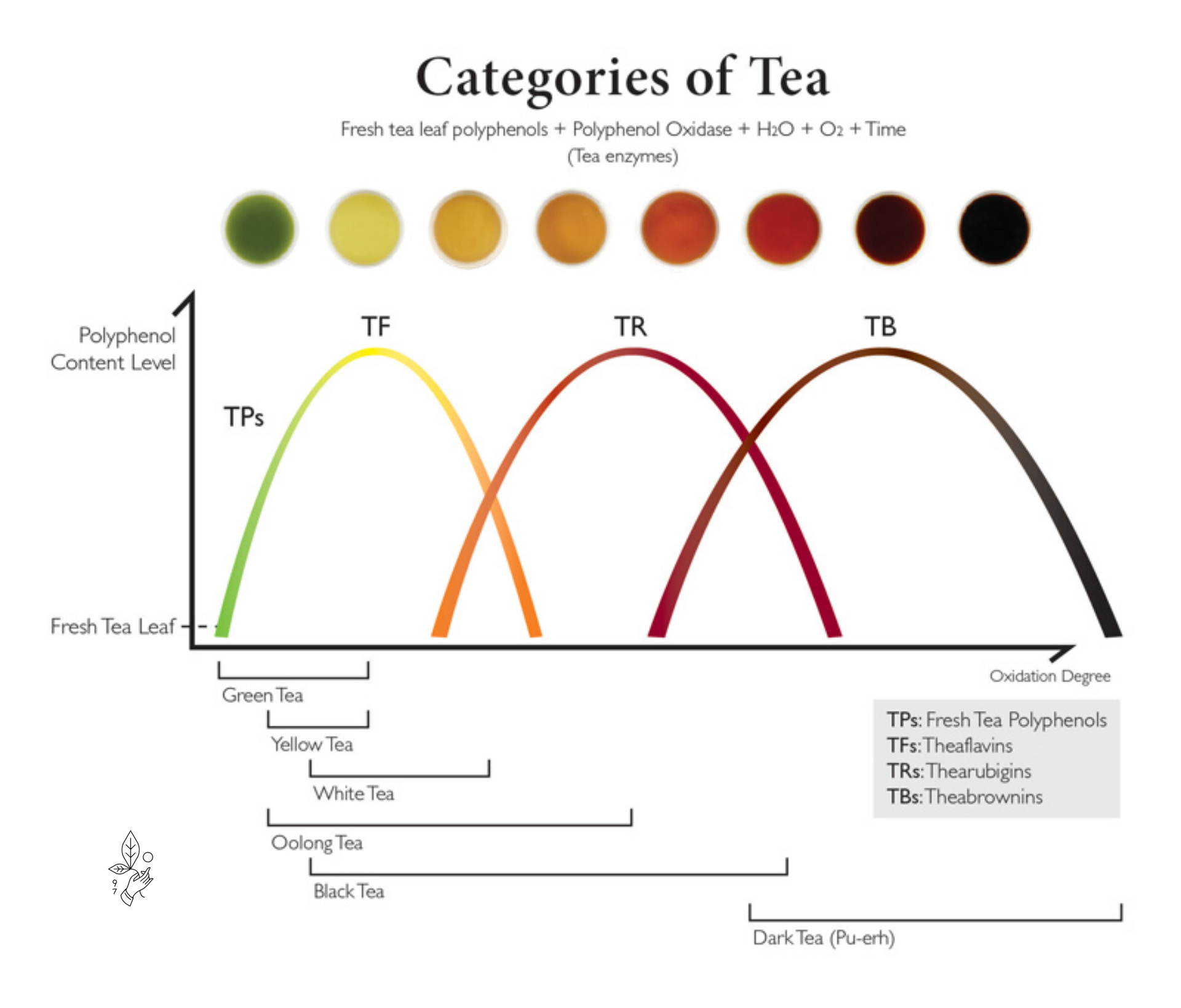
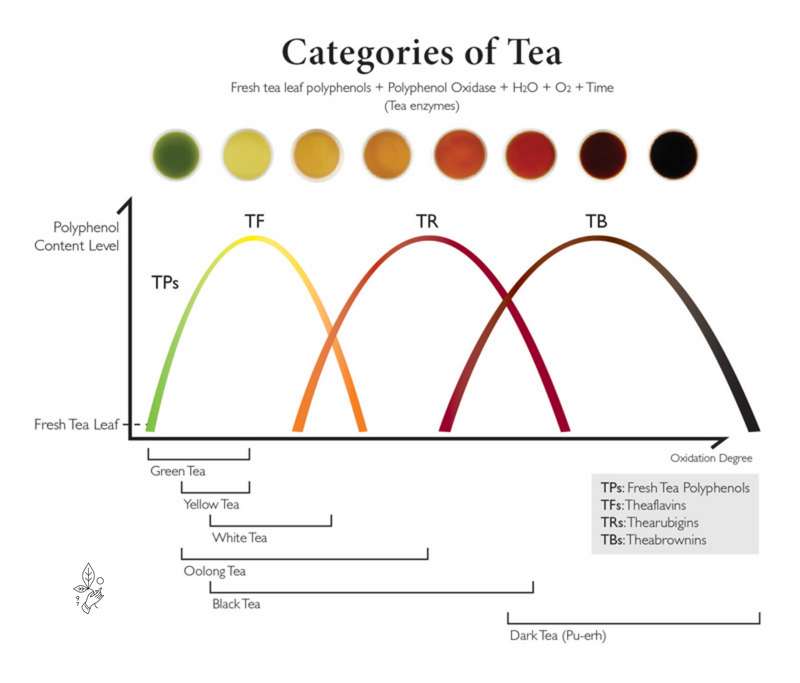
1st and 2nd Flush Darjeeling teas are excellent examples of the range of polyphenols observed within the category of black tea. The 1st flush Darjeeling teas are prime illustrations of black teas possessing Theaflavins, a polyphenol found in lesser oxidized teas. The 2nd flush teas illustrate black teas possessing Thearubigins, found in the mid-range of many types of tea. The polyphenols alter the flavor profiles and mouthfeel. The structure of polyphenols also determine what type of water temperature would be suit the tea when brewing.
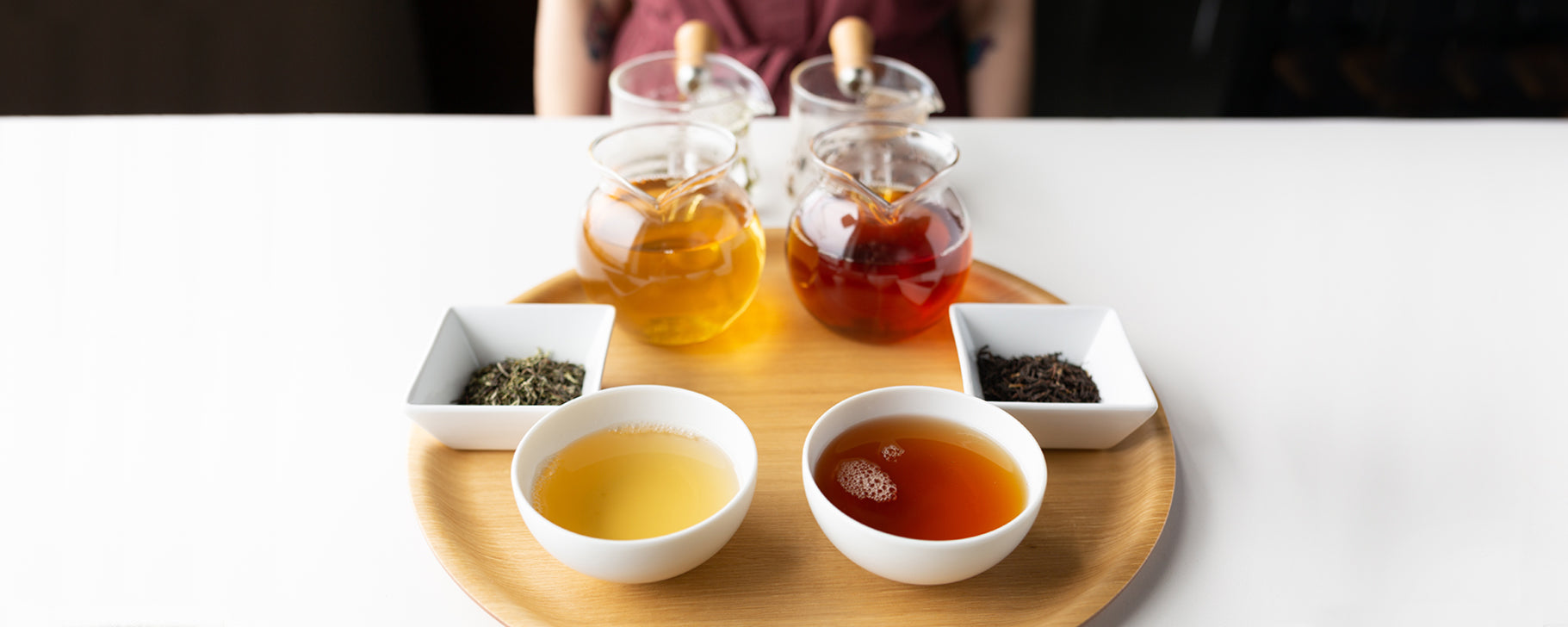
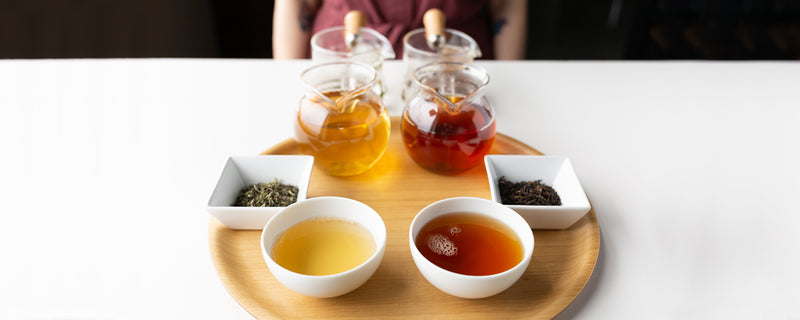
As with any venture into a culinary endeavor, the truest way to figure out your preference is to experiment! Try brewing teas using varying water temperatures to determine what you like best. If you should ever have questions or need suggestions on how to brew a Rishi profile, please refer the product page on our website, or contact our Customer Service team.
